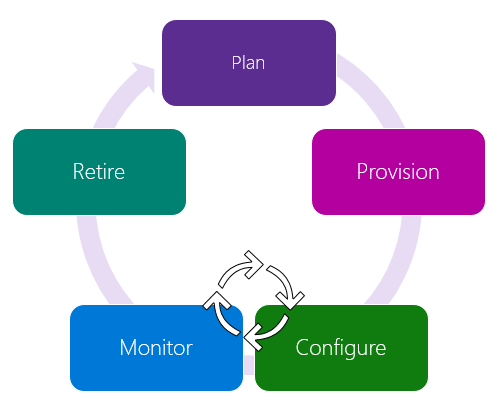Review device management concepts for Azure IoT Hub
Azure IoT Hub provides the features and an extensibility model that enable device and back-end developers to build robust device management solutions. Devices range from constrained sensors and single purpose microcontrollers, to powerful gateways that route communications for groups of devices. In addition, the use cases and requirements for IoT operators vary significantly across industries. Despite this variation, device management with IoT Hub provides the capabilities, patterns, and code libraries to cater to a diverse set of devices and end users.
Device management principles
IoT solutions come with a unique set of device management challenges and every enterprise-class solution must address the following principles:

- Scale and automation: IoT solutions require simple tools that can automate routine tasks and enable a relatively small operations staff to manage millions of devices. Day-to-day, operators expect to handle device operations remotely, in bulk, and to only be alerted when issues arise that require their direct attention.
- Openness and compatibility: The device ecosystem is extraordinarily diverse. Management tools must be tailored to accommodate a multitude of device classes, platforms, and protocols. Operators must be able to support many types of devices, from the most constrained embedded single-process chips, to powerful, and fully functional computers.
- Context awareness: IoT environments are dynamic and ever-changing. Service reliability is paramount. Device management operations must take into account the following factors to ensure that maintenance downtime doesn't affect critical business operations or create dangerous conditions:
- SLA maintenance windows
- Network and power states
- In-use conditions
- Device geolocation
- Service many roles: Support for the unique workflows and processes of IoT operations roles is crucial. The operations staff must work harmoniously with the given constraints of internal IT departments. They must also find sustainable ways to surface real-time device operations information to supervisors and other business managerial roles.
Device lifecycle
There is a set of general device management stages that are common to all enterprise IoT projects. In Azure IoT Hub, there are five stages within the device lifecycle:

Within each of these five stages, there are several device operator requirements that should be fulfilled to provide a complete solution:
- Plan: Enable operators to create a device metadata scheme that enables them to easily and accurately query for, and target a group of devices for bulk management operations. You can use the device twin to store this device metadata in the form of tags and properties.
- Provision: Securely provision new devices to IoT Hub and enable operators to immediately discover device capabilities. Use the IoT Hub identity registry to create flexible device identities and credentials, and perform this operation in bulk by using a job. Build devices to report their capabilities and conditions through device properties in the device twin.
- Configure: Facilitate bulk configuration changes and firmware updates to devices while maintaining both health and security. Perform these device management operations in bulk by using desired properties or with direct methods and broadcast jobs.
- Monitor: Monitor overall device collection health, the status of ongoing operations, and alert operators to issues that might require their attention. Apply the device twin to allow devices to report real-time operating conditions and status of update operations. Build powerful dashboard reports that surface the most immediate issues by using device twin queries. Protect your IoT environment from threats, with multiple deployment options including fully on-premises, cloud-connected, or hybrid.
- Retire: Replace or decommission devices after a failure, upgrade cycle, or at the end of the service lifetime. Use the device twin to maintain device information if the physical device is being replaced, or archived if being retired. Use the IoT Hub identity registry for securely revoking device identities and credentials.